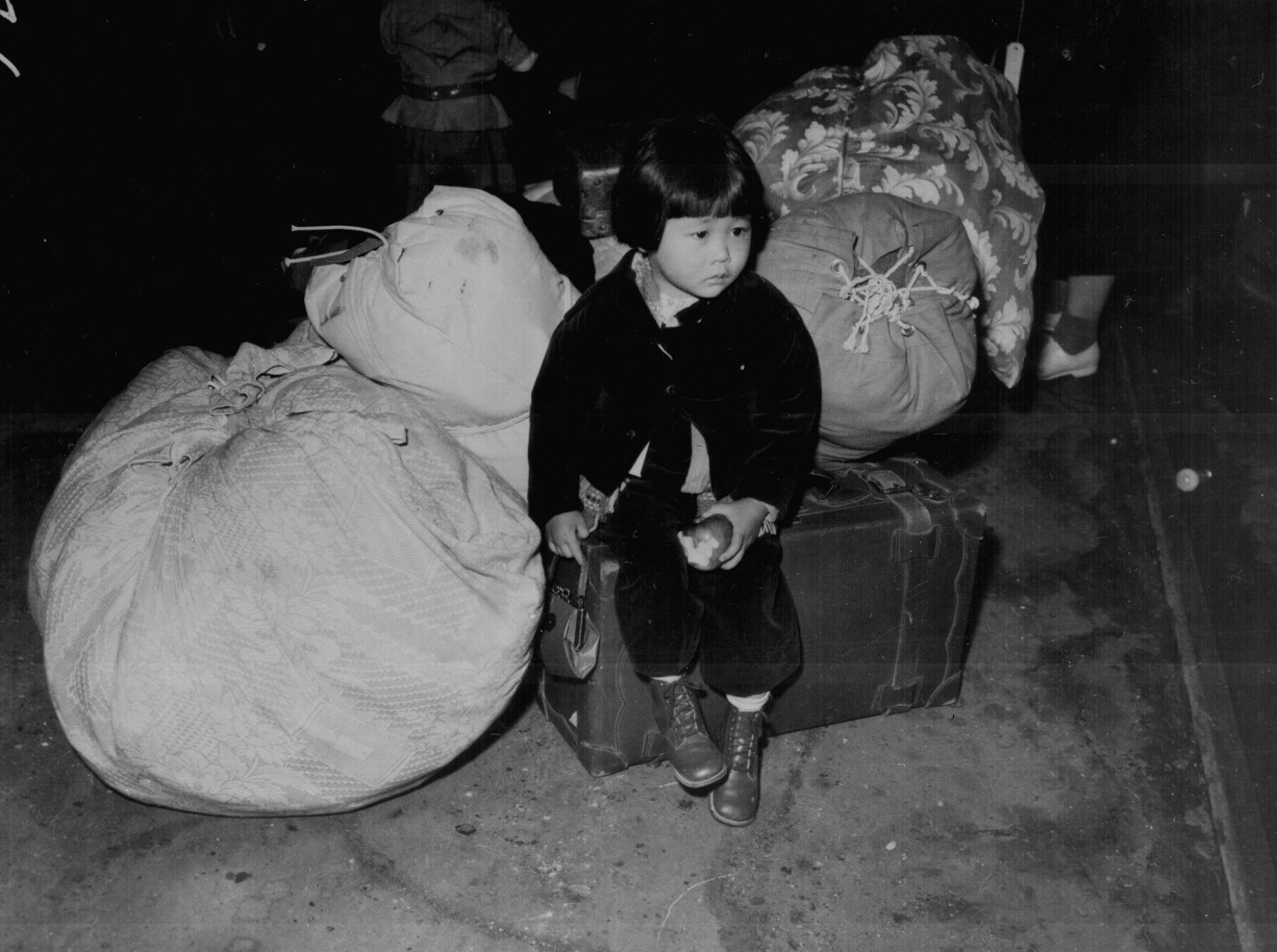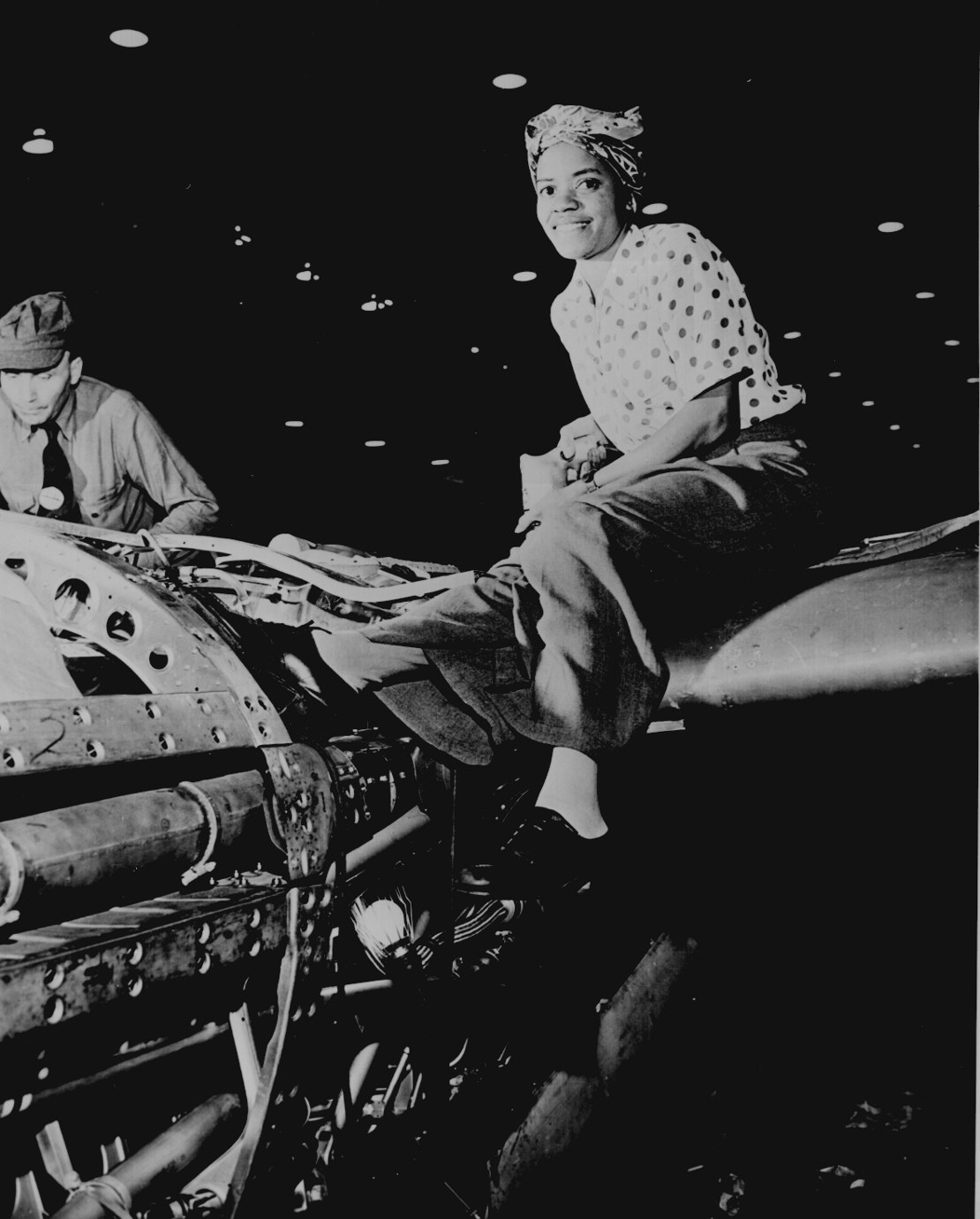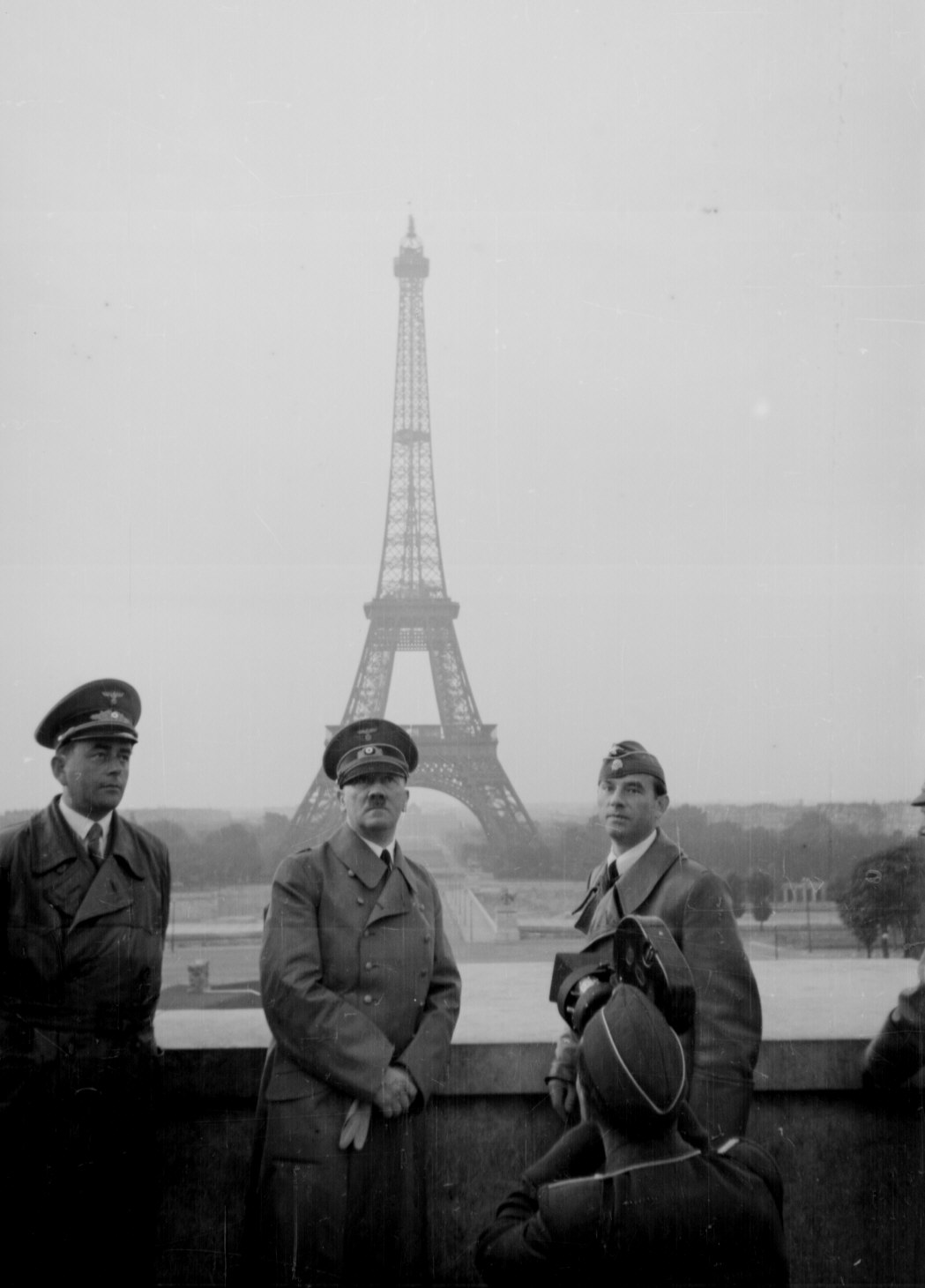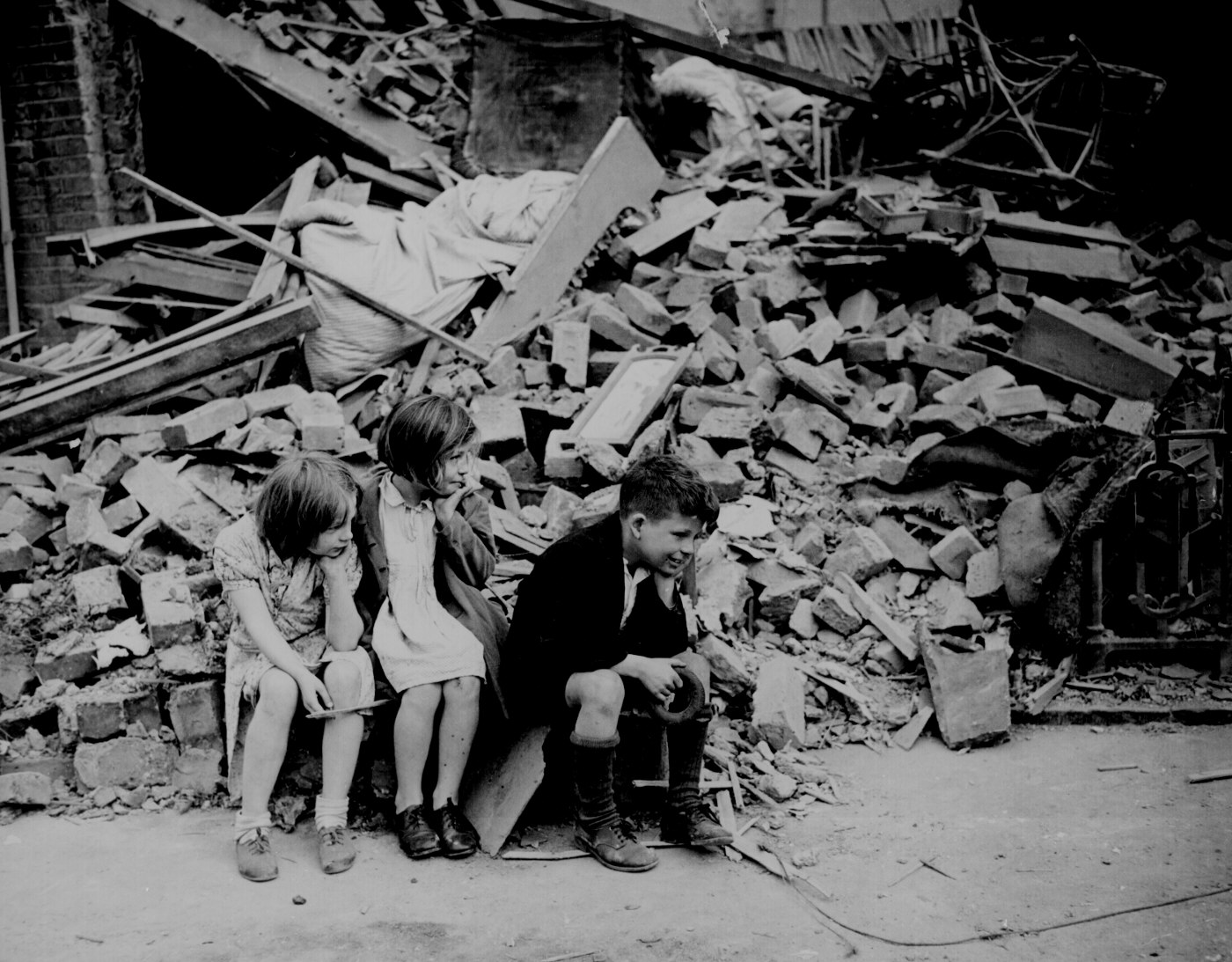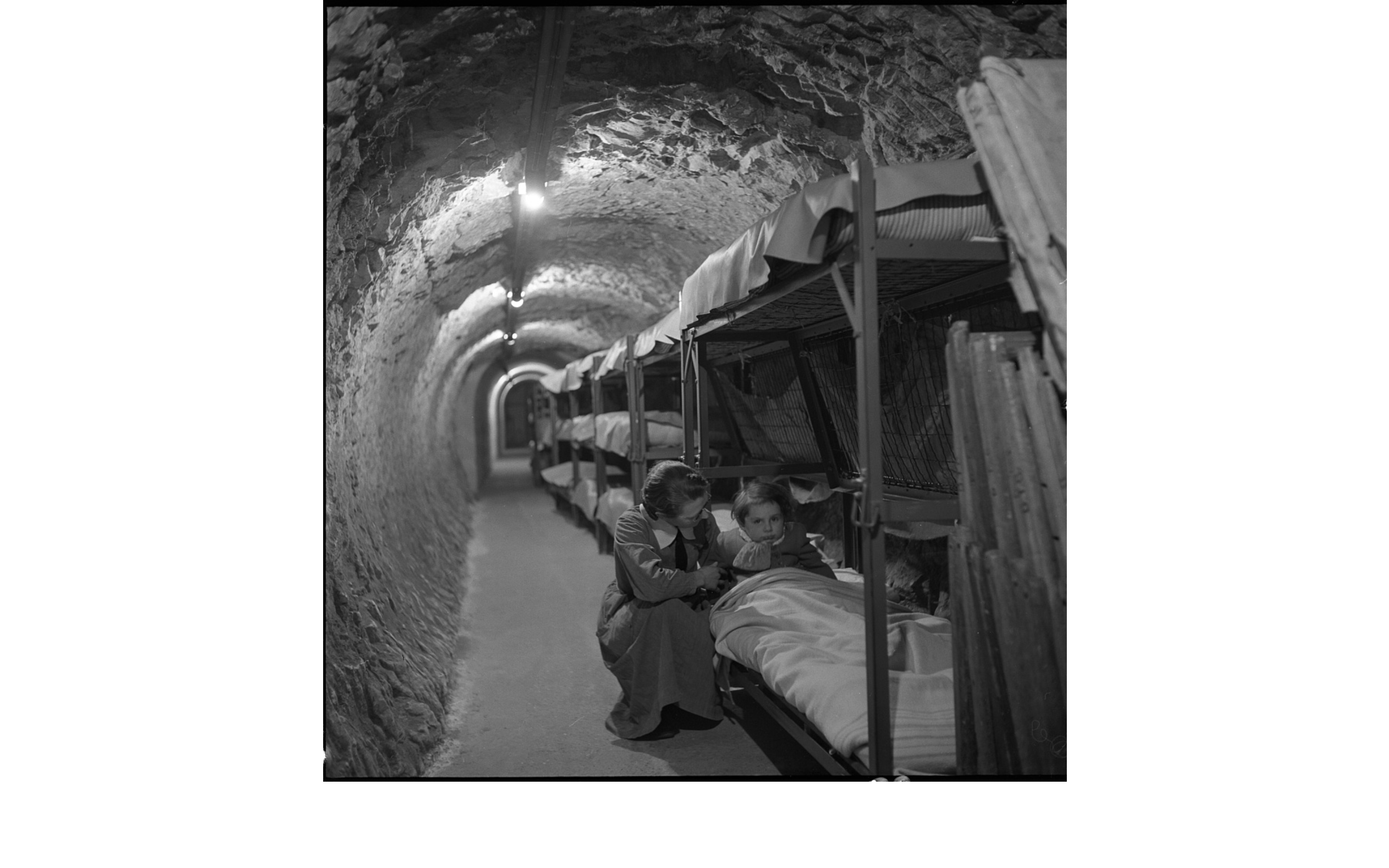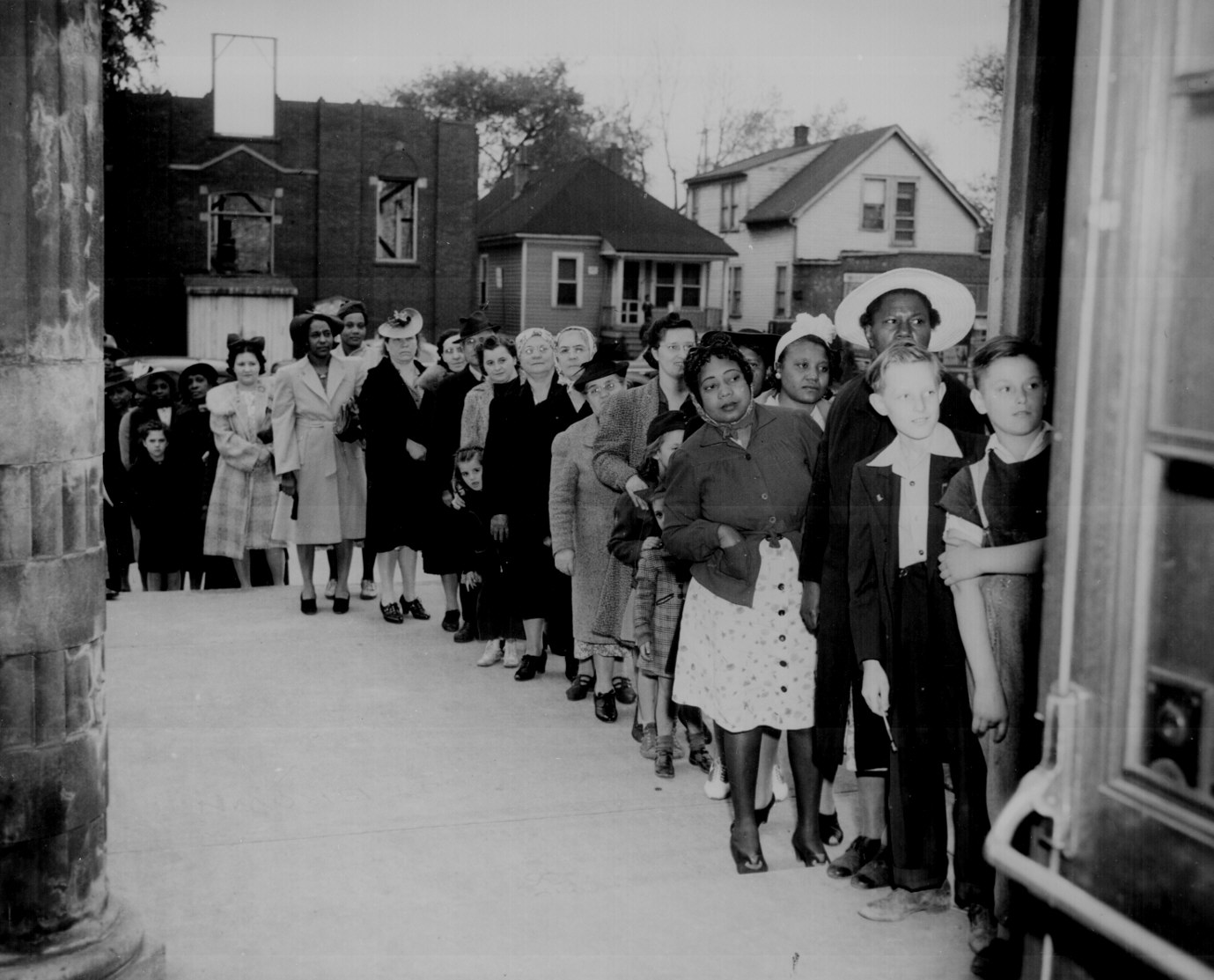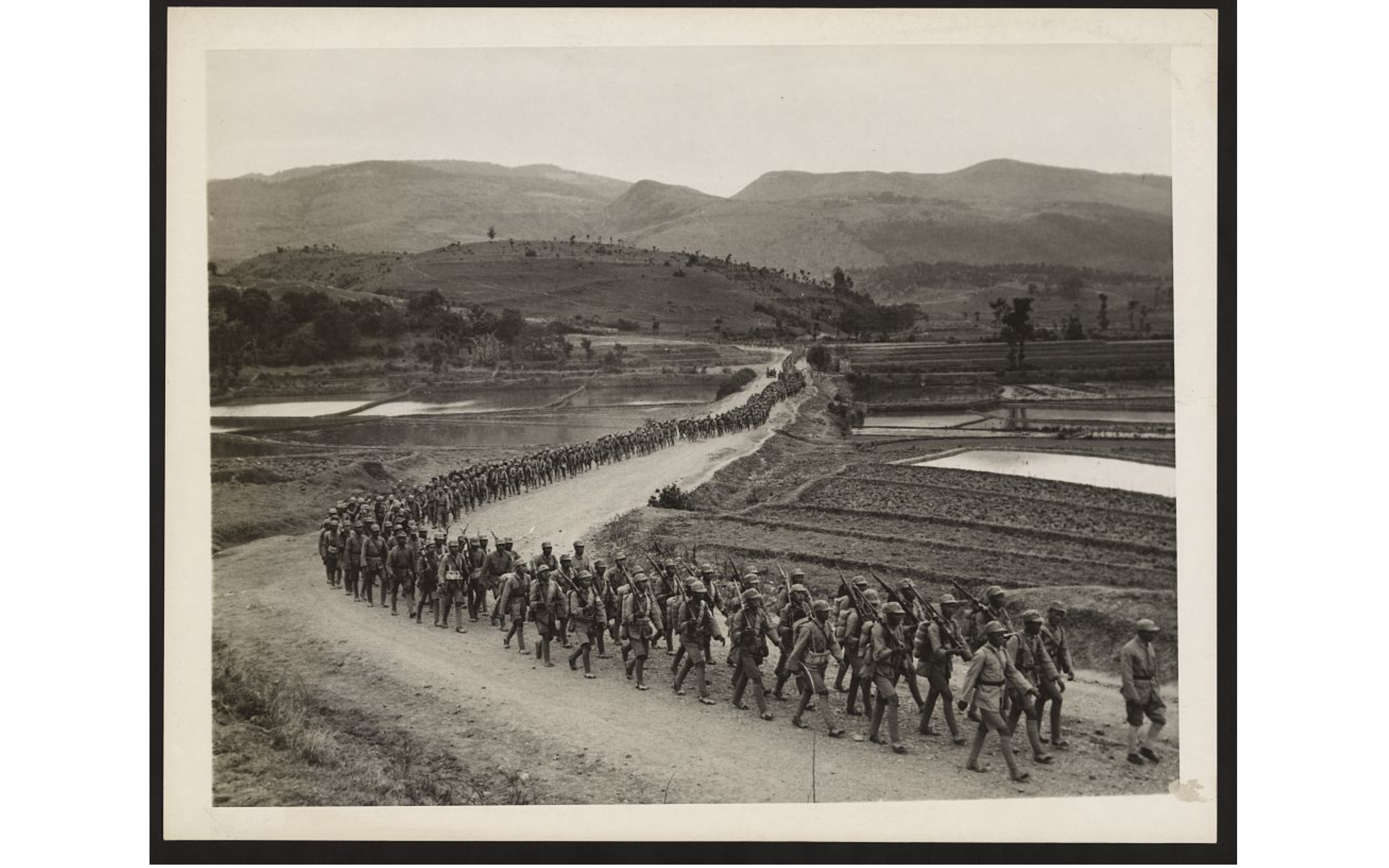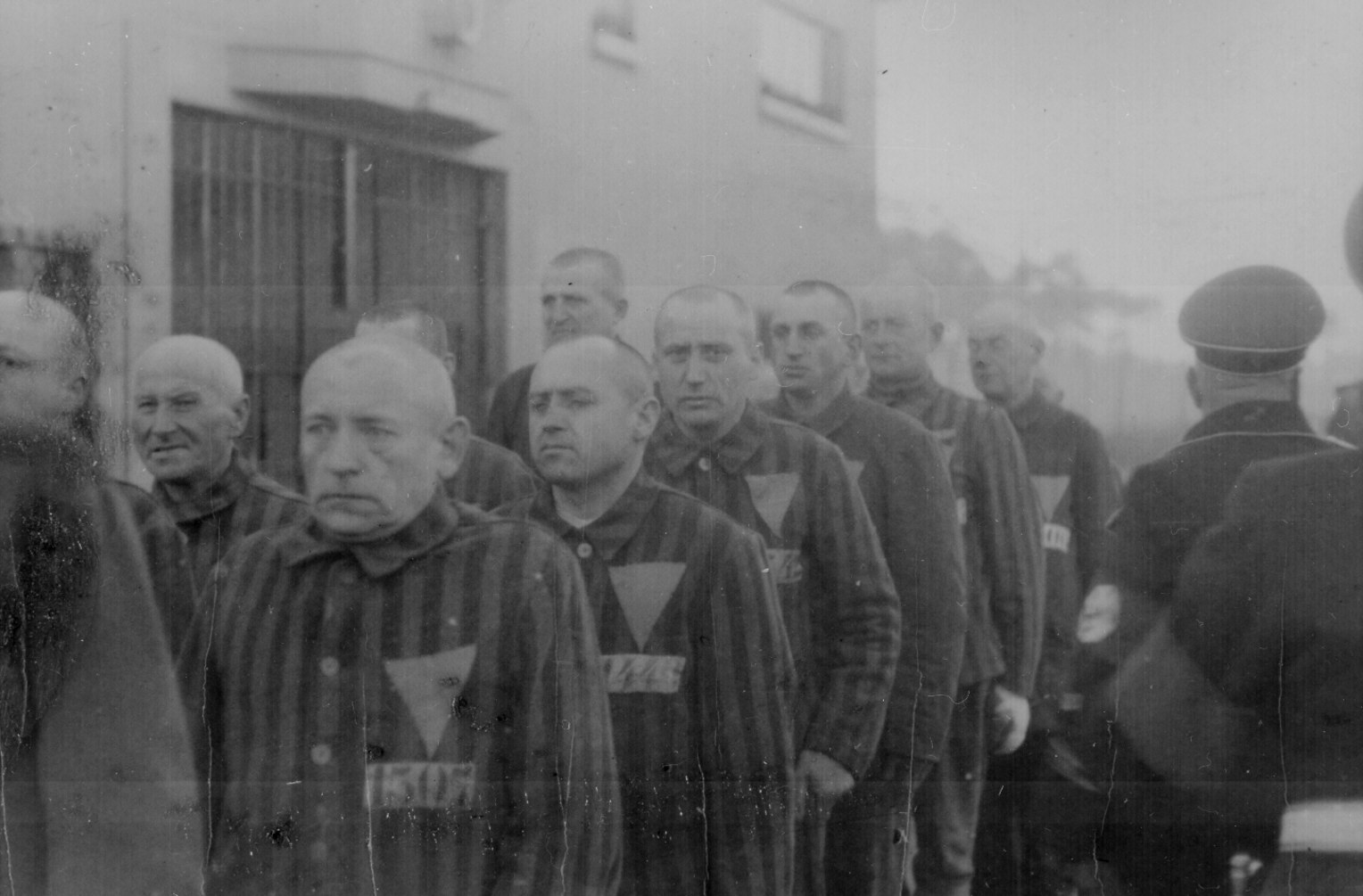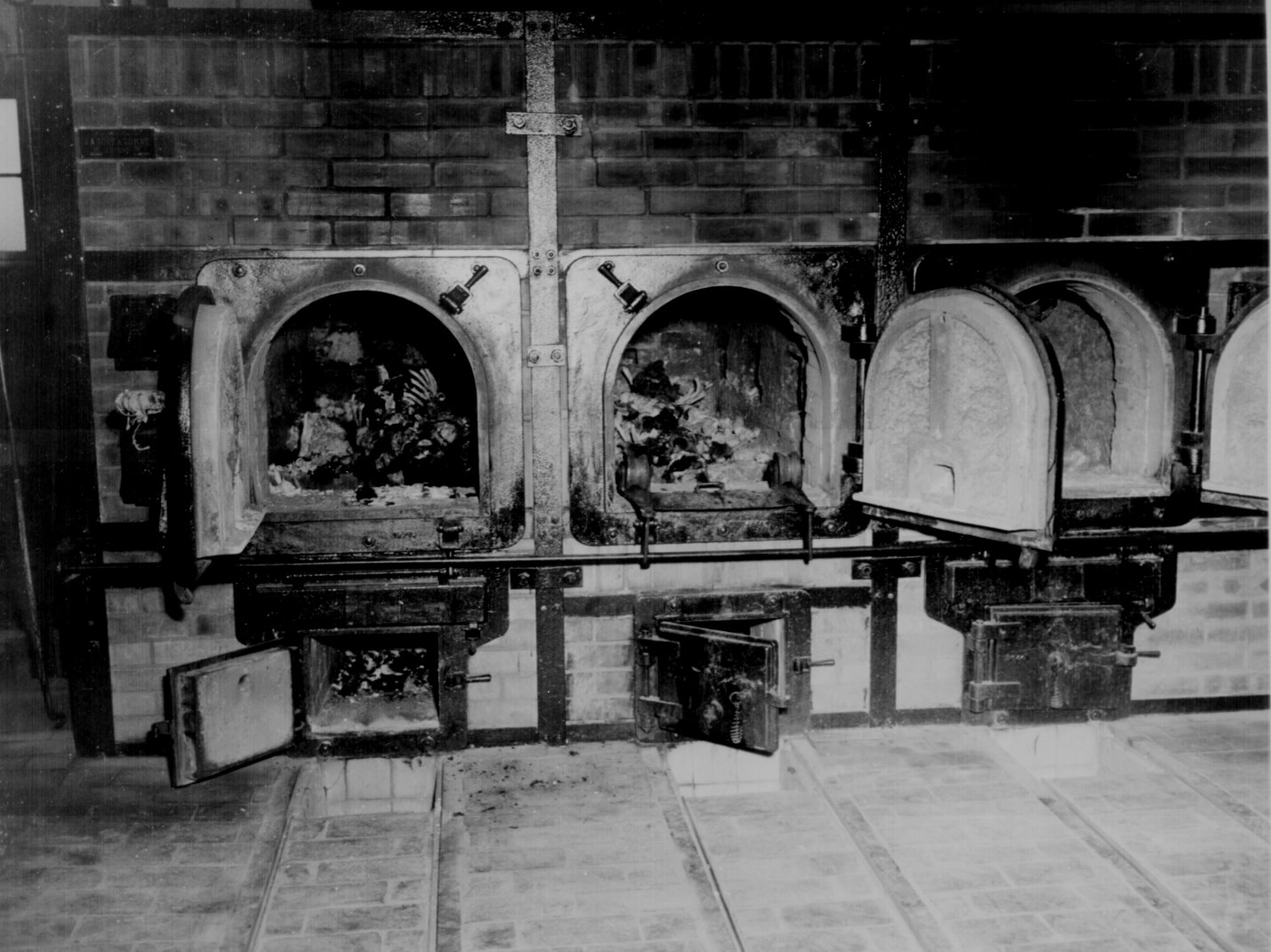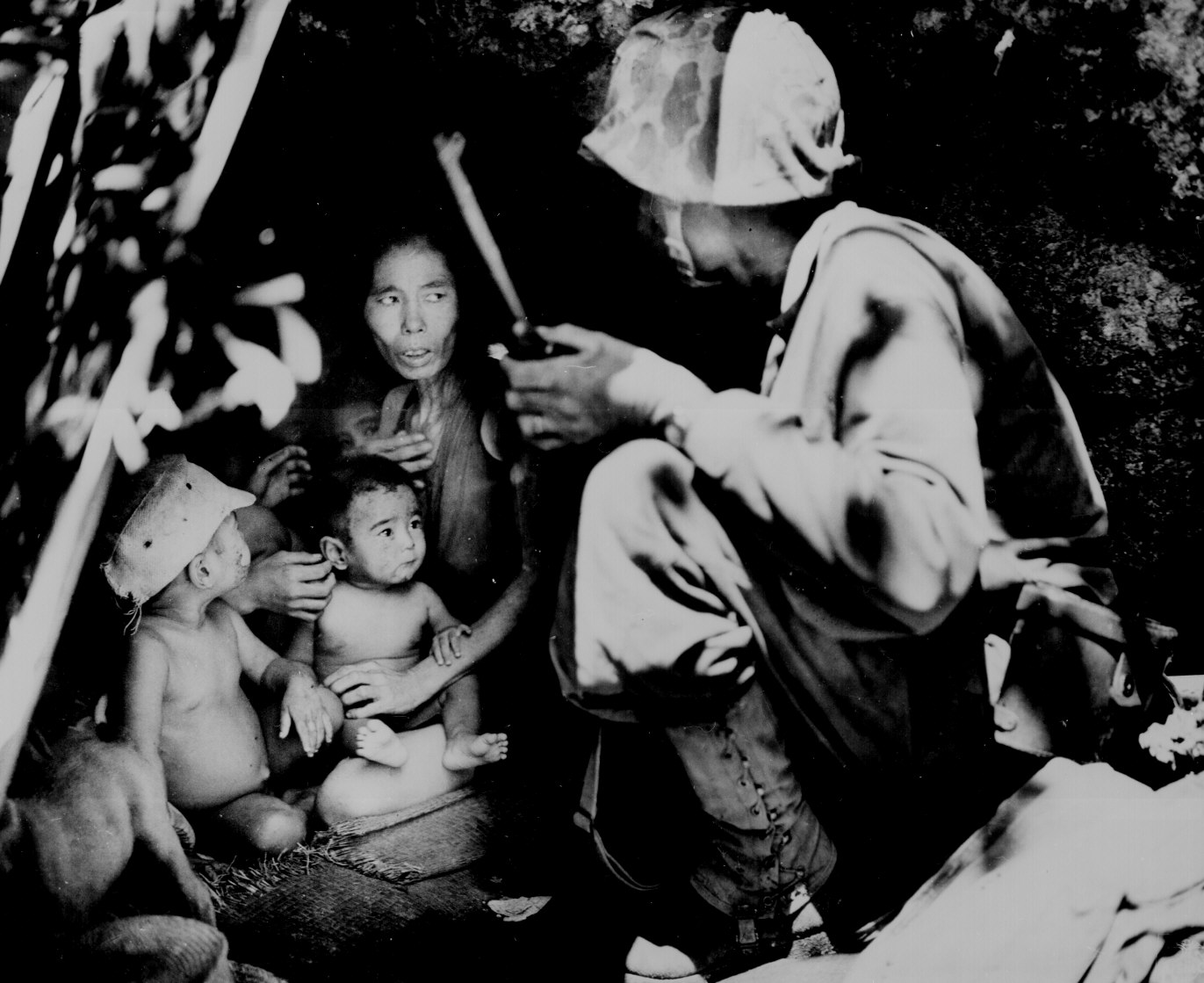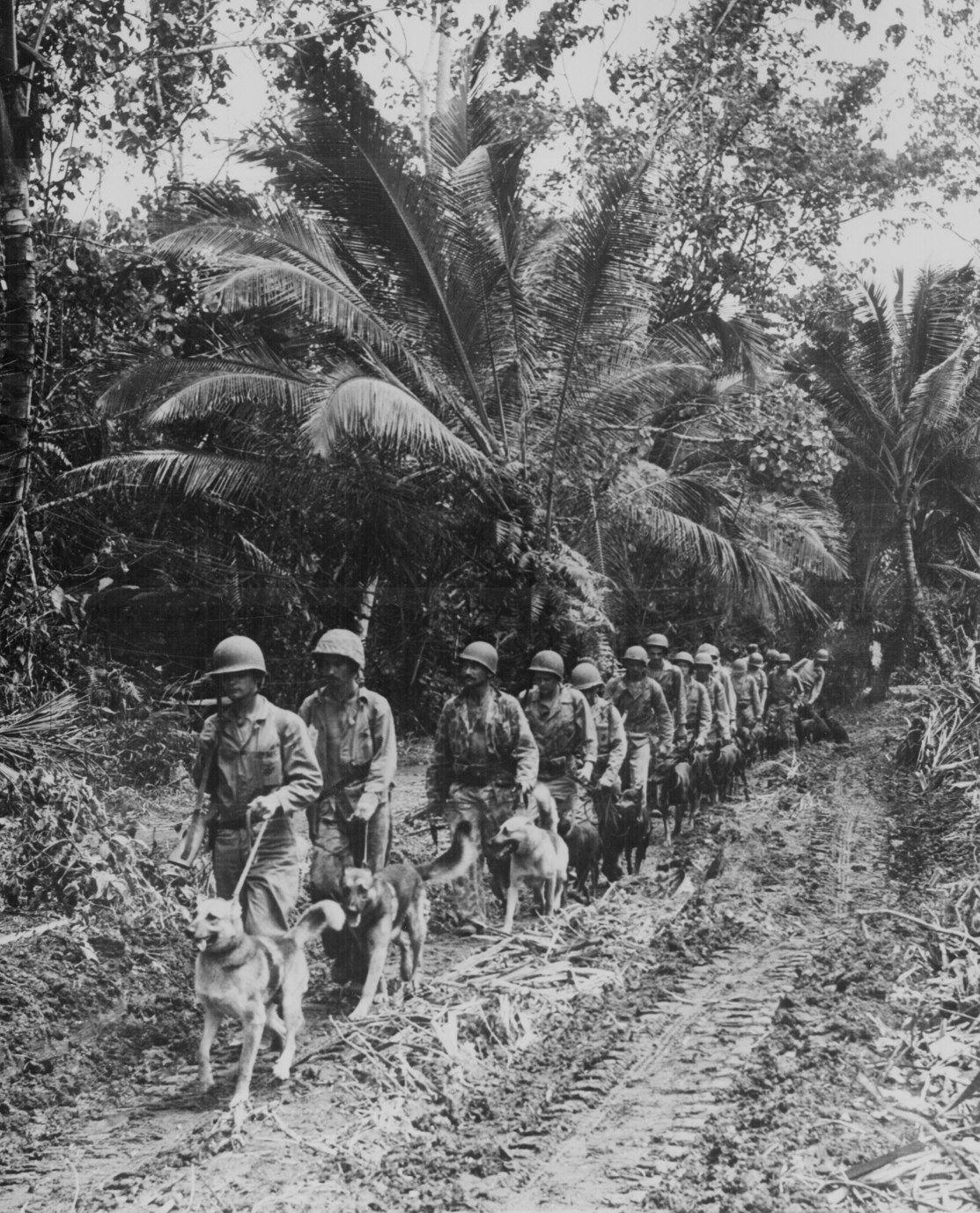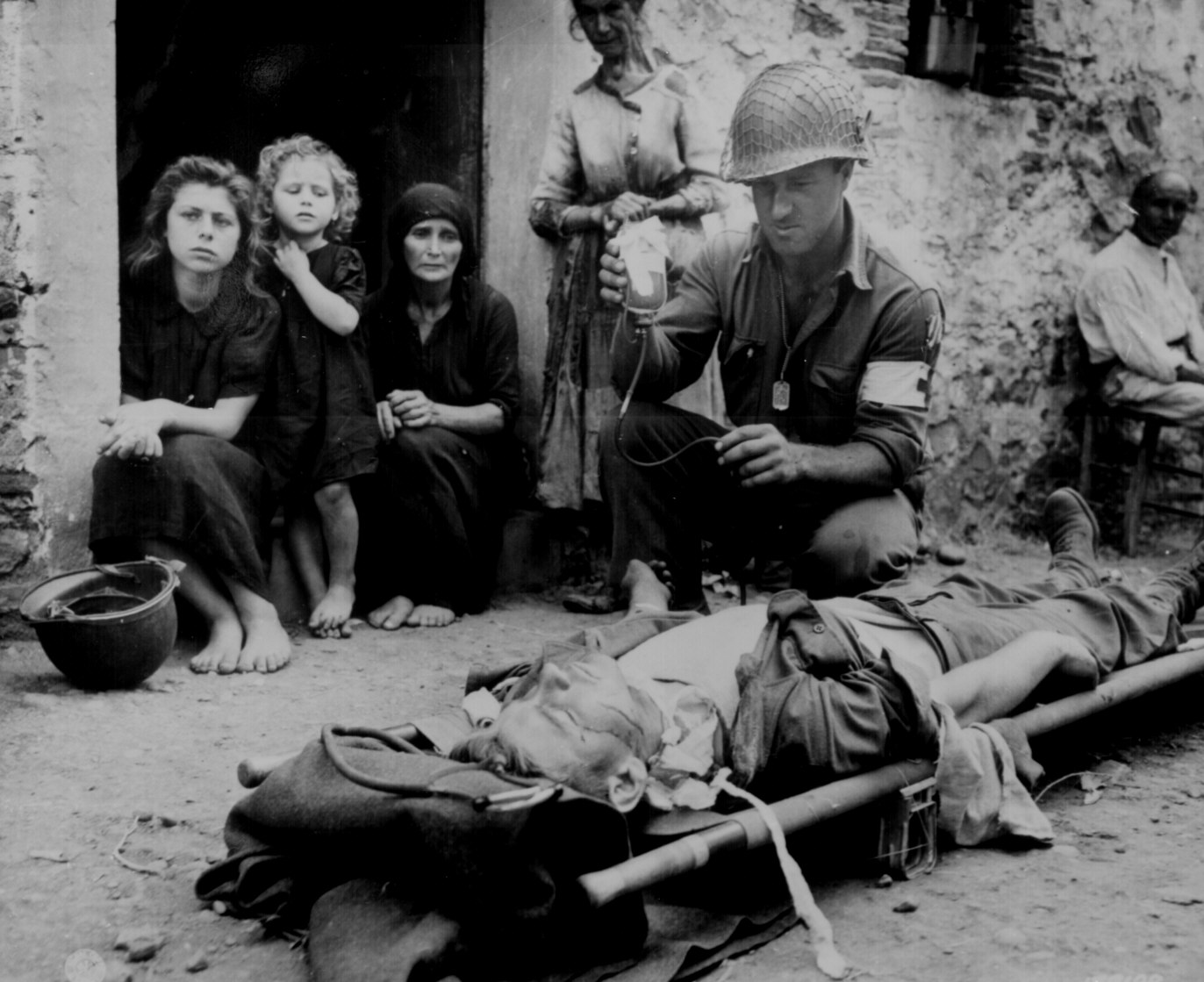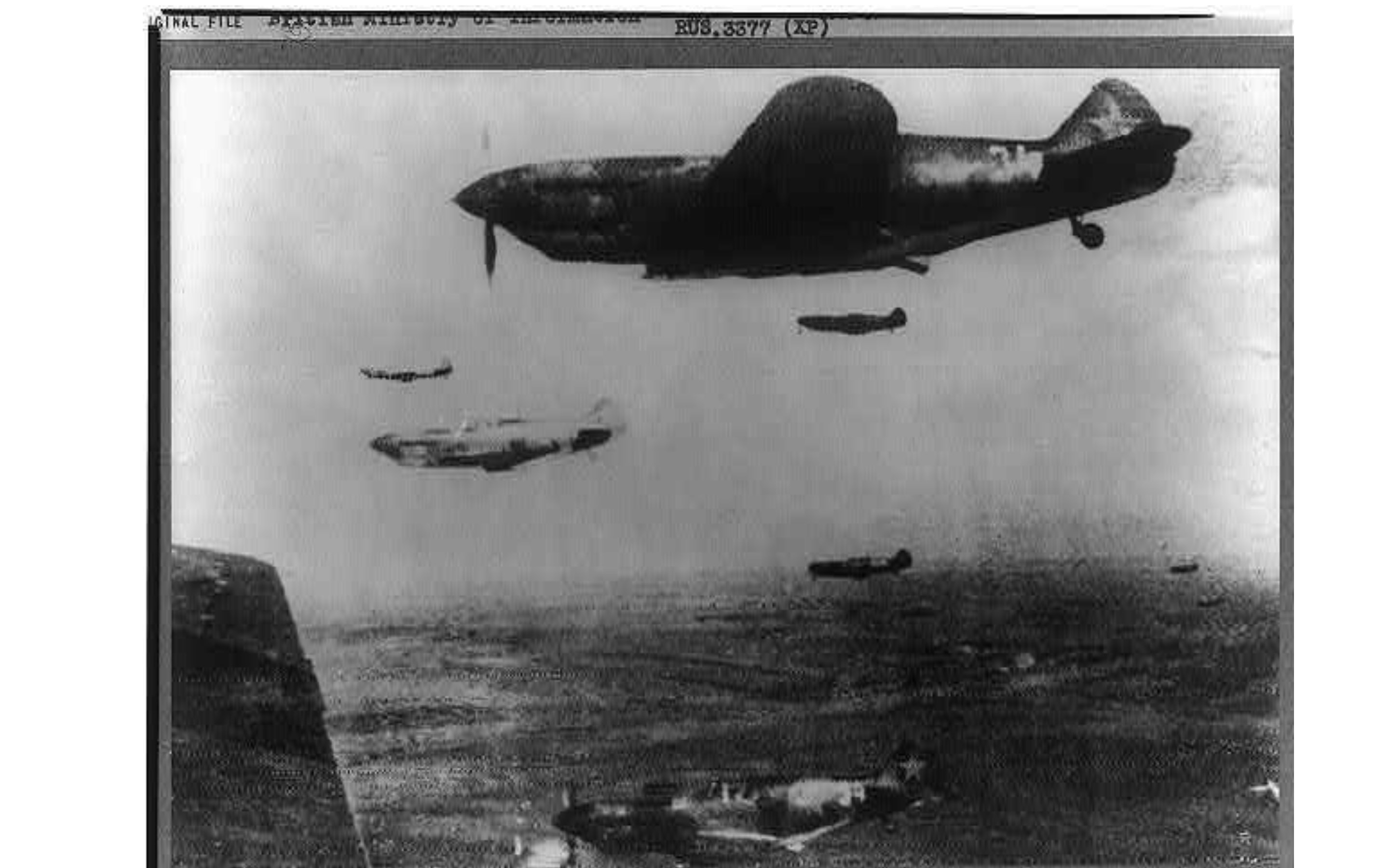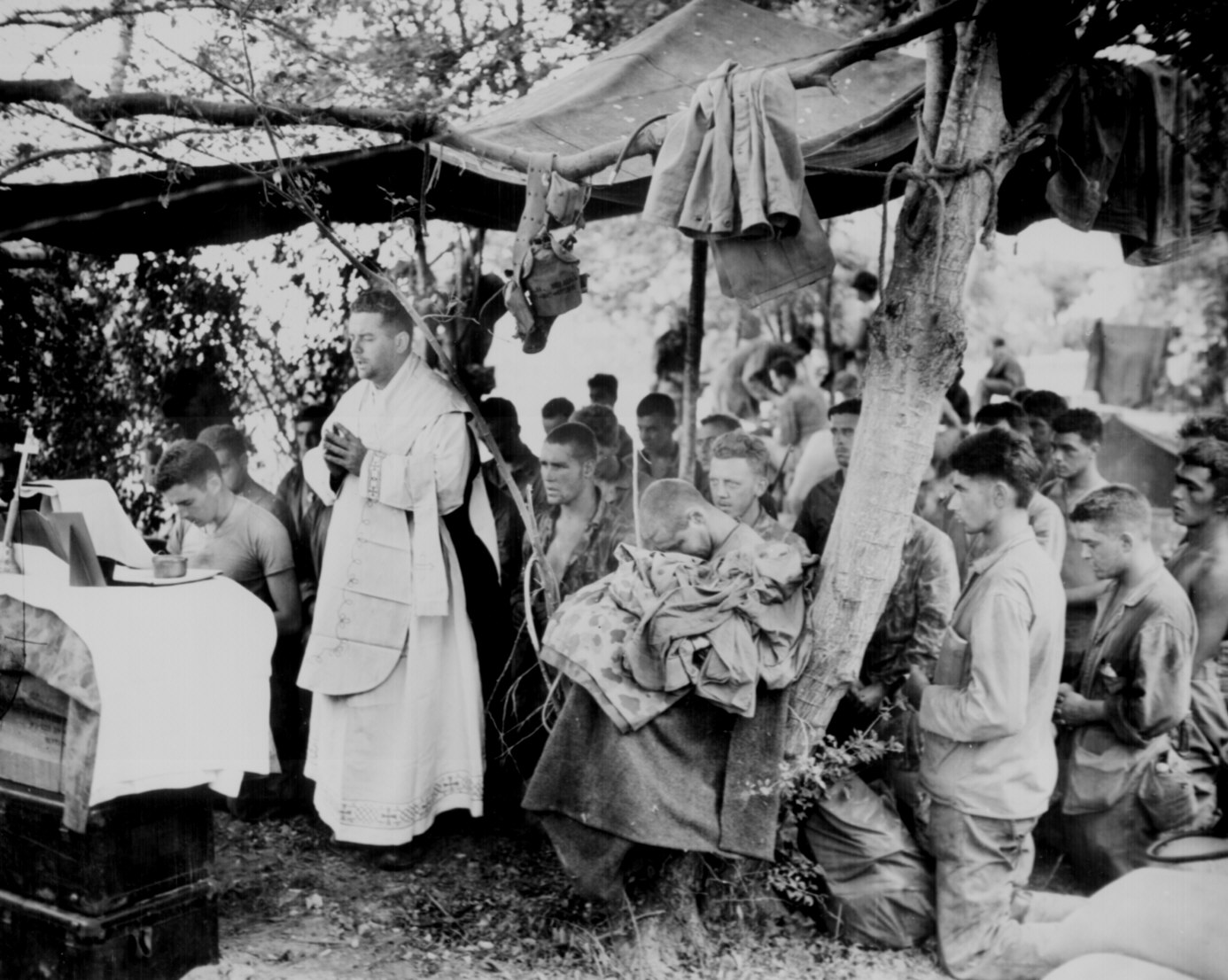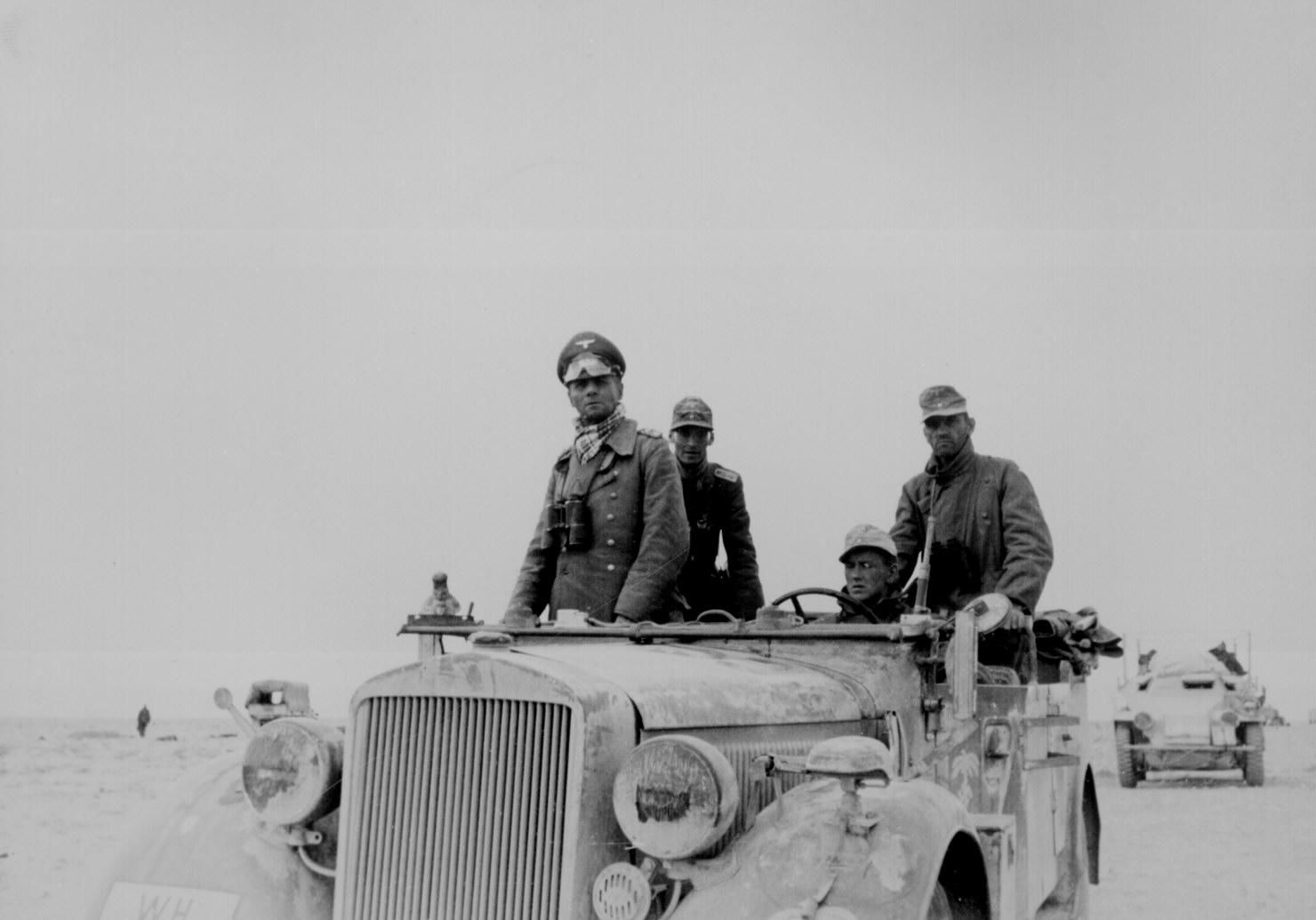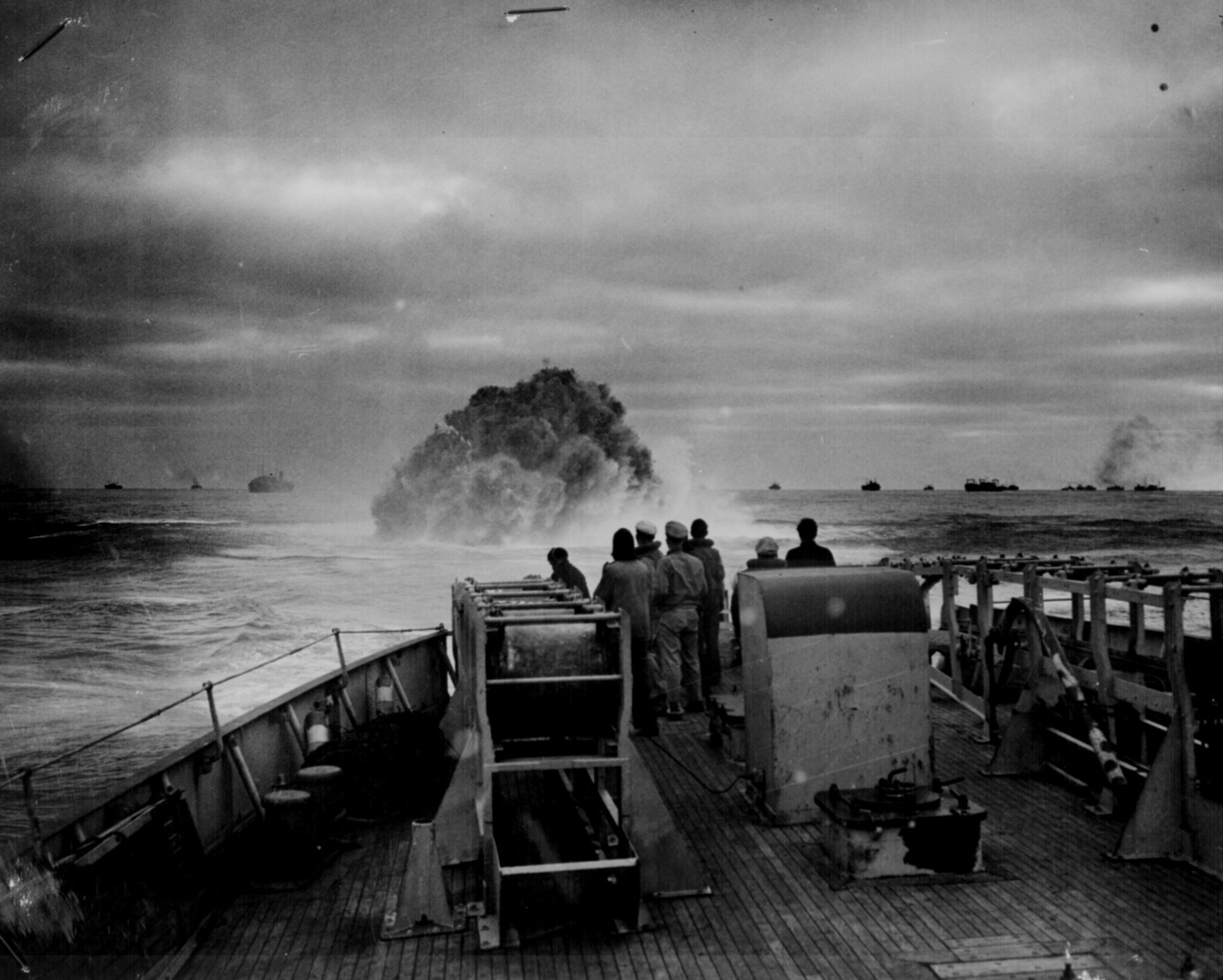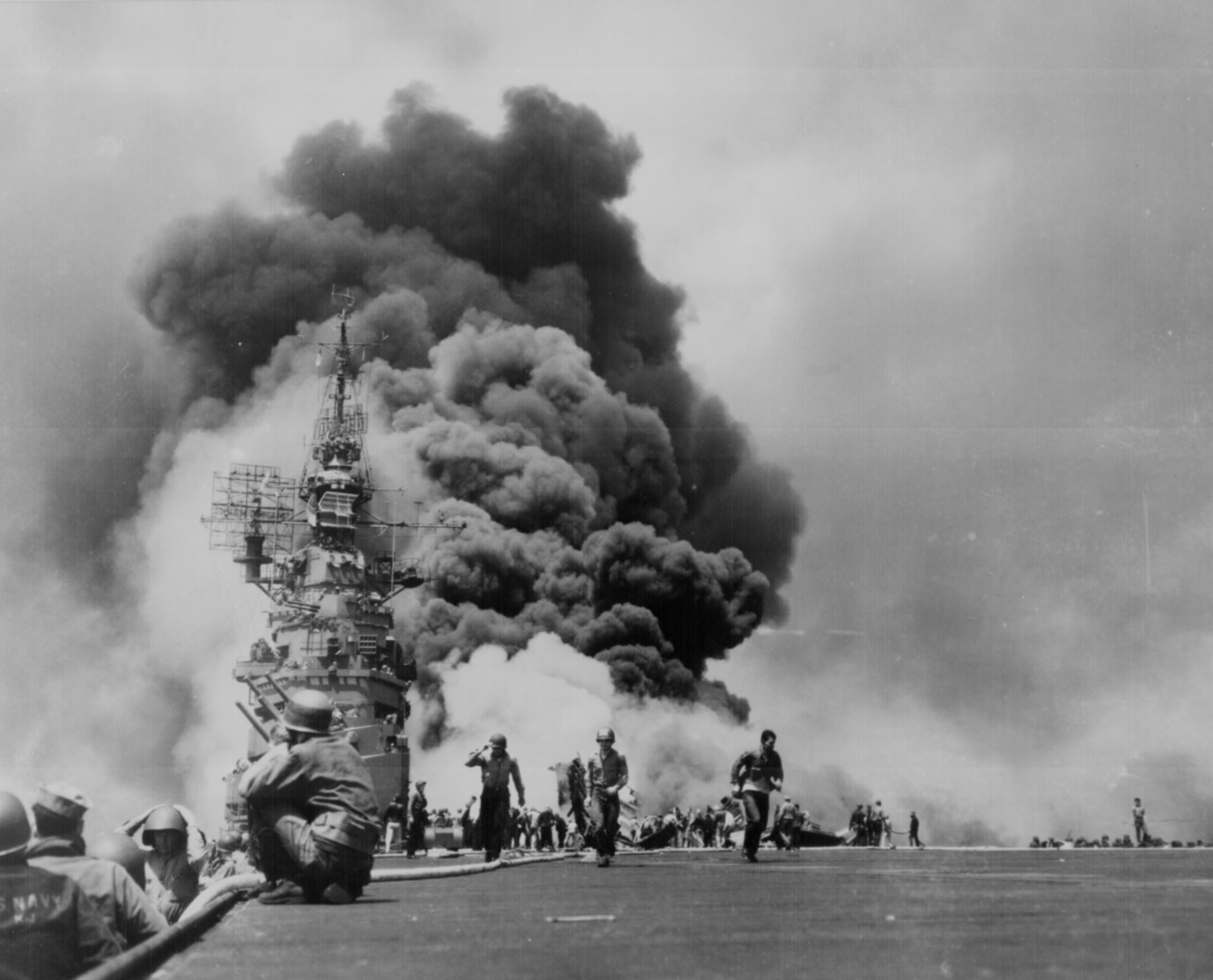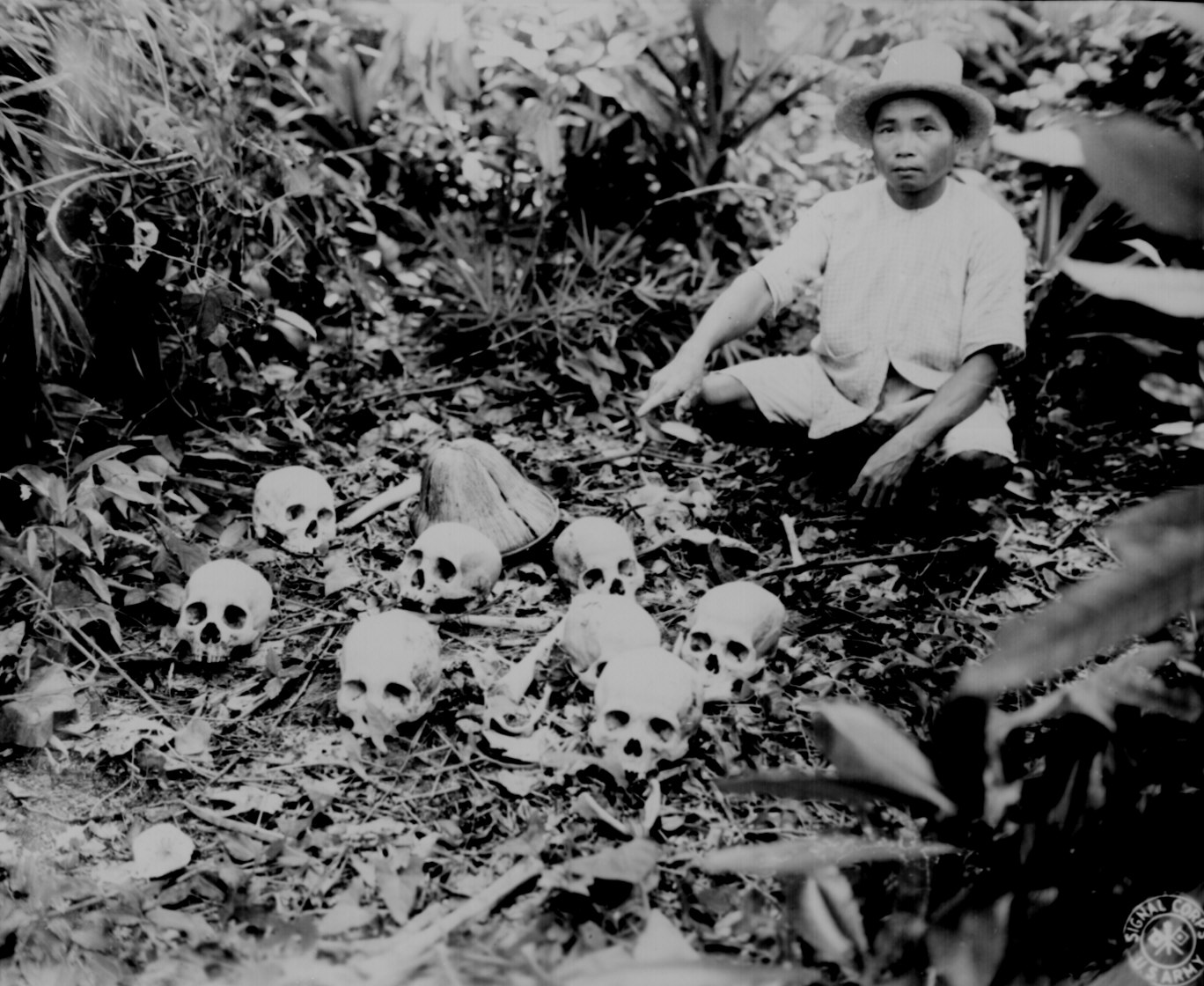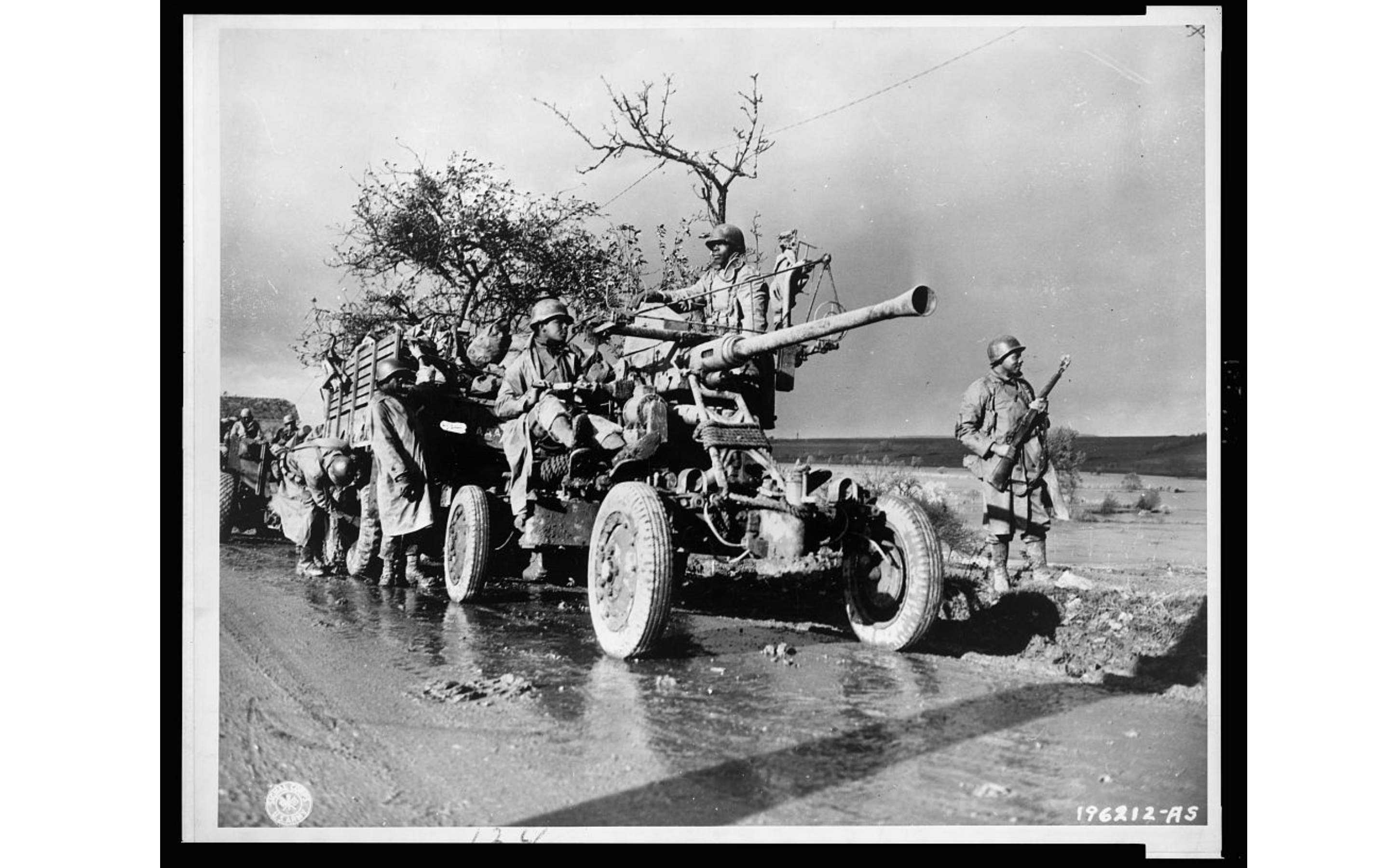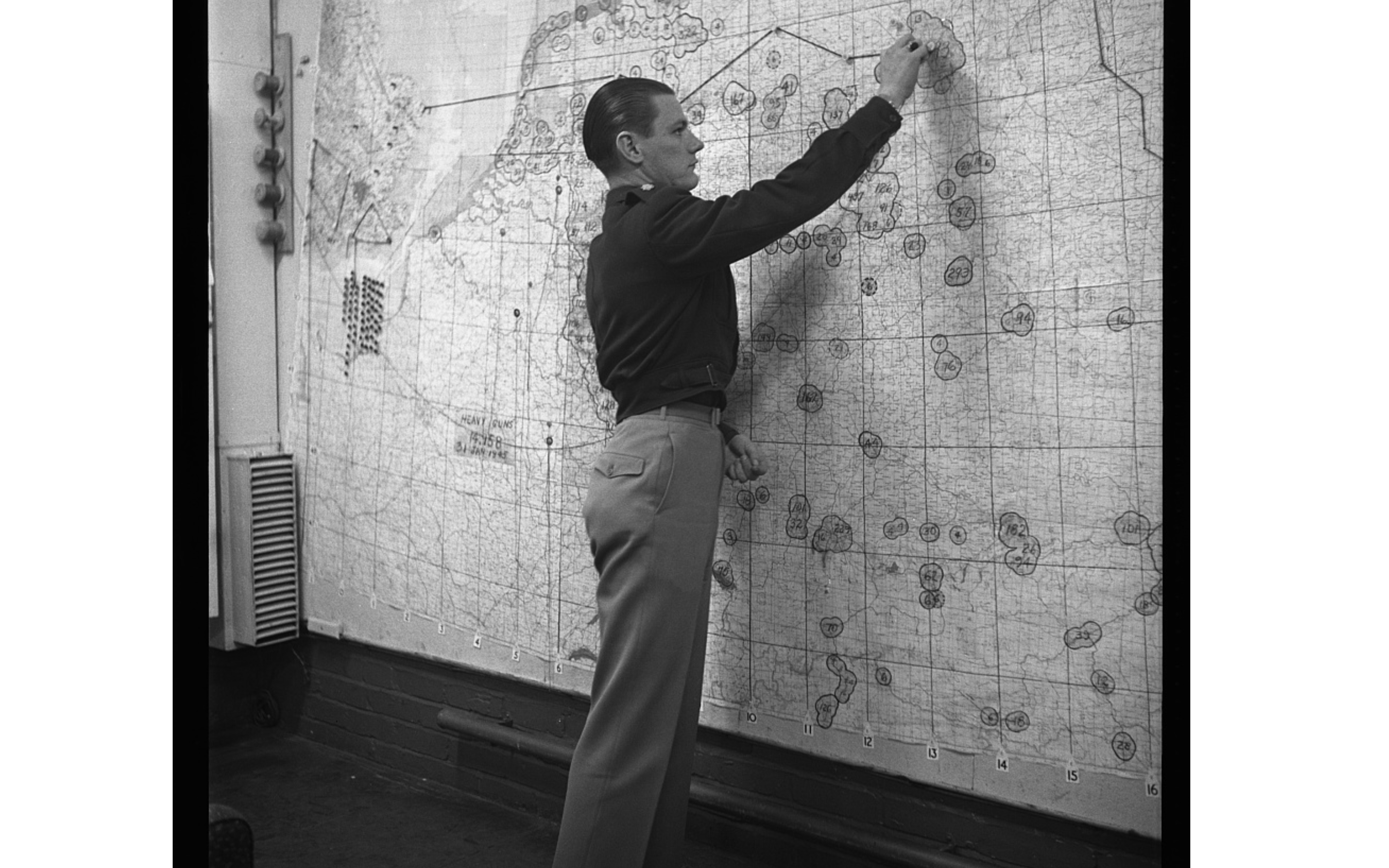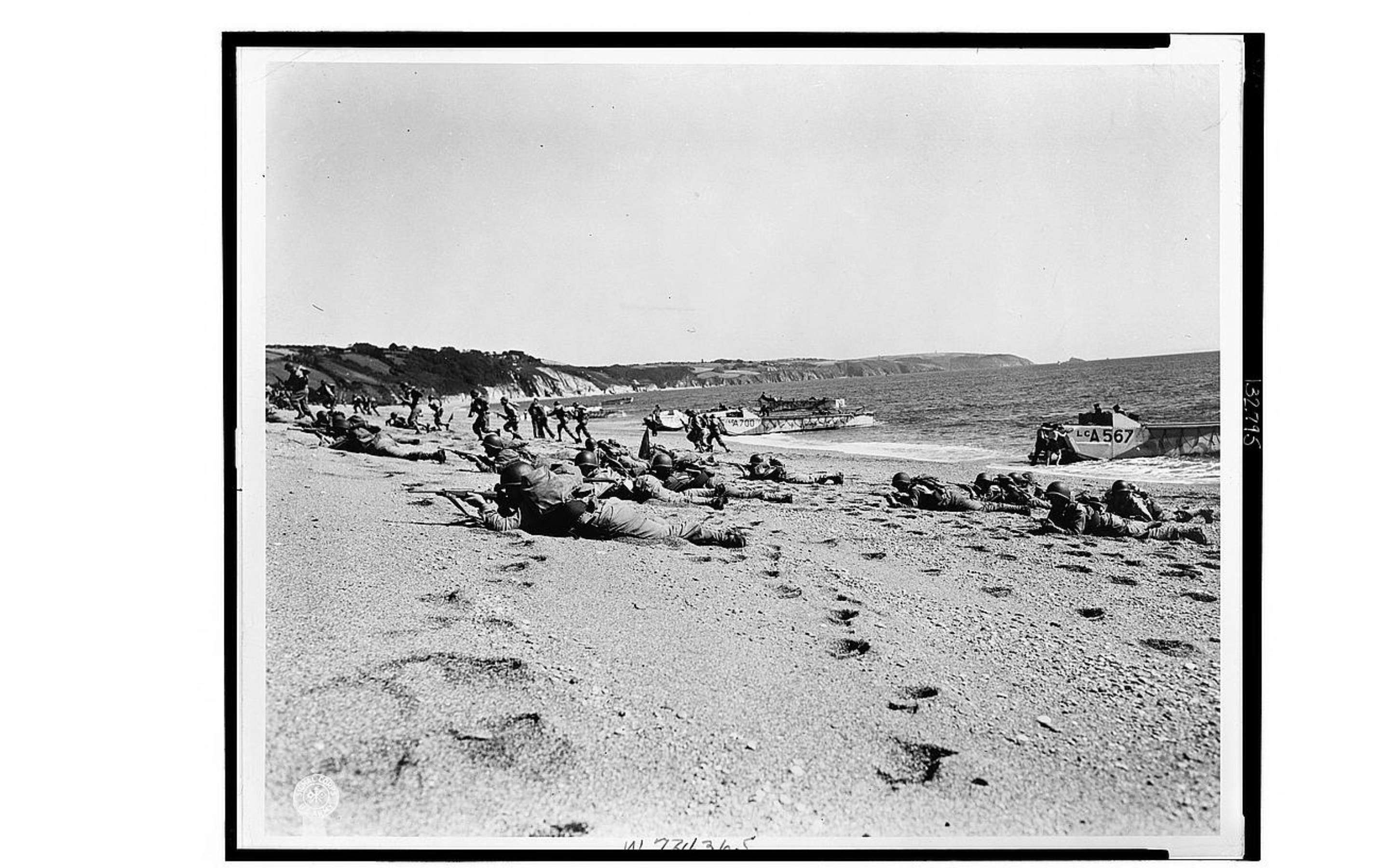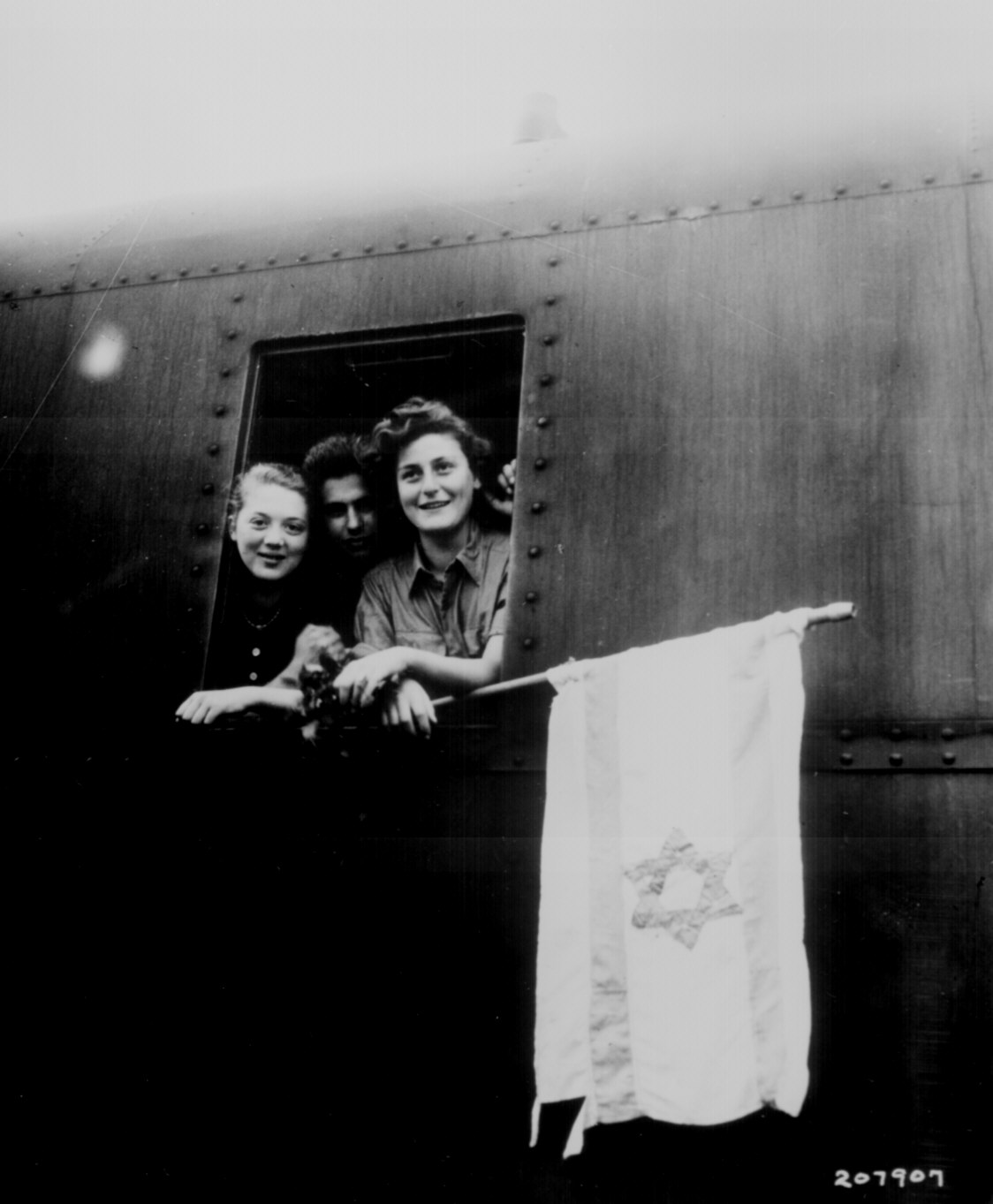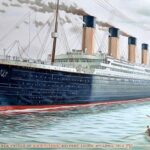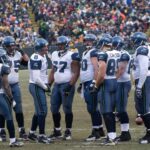From war photographers embedded on the front lines to domestic photographers capturing wartime life on the homefront, World War II‘s photographic history is a rich one.
While some images have remained iconic decades later, others reveal aspects of this global conflict that, for some, have been mostly forgotten.
Here are lesser-seen photographs from World War II that tell the story of the war from many perspectives.
Women Workers
With men off fighting, women stepped up to do their jobs at home and support the homefront. It wasn’t easy for many, as those with families still had to keep their traditional roles at home.
The war allowed women of color to find nontraditional jobs as well, as can be seen from this photo of a riveter at work in California.
European Invasion
German forces crossed into France in May and June of 1940. At that point in the war, only Great Britain was fighting Germany.
Here, Adolf Hitler poses with the Eiffel Tower in the background on June 23, 1940.
Air Raids
With German forces regularly bombing Great Britain, air raids became a large part of British life during the war. Here, children are shown sitting in the rubble that used to be their home in eastern London. Known as the Blitz, the German air raids focused on cities in Britain in the hopes of making a future German invasion easier.
Sheltering Underground
As part of survival strategies against German air raids, people sought shelter in underground tunnels. This woman and little boy seem to be demonstrating the use of an air-raid shelter, as the rest of the bunk beds in the tunnel are empty. Throughout the Battle for Britain, civilians also took shelter in Tube tunnels, platforms and stations.
Supply Rationing
Careful rationing of food, materials and other supplies took place in the U.S. throughout America’s involvement in the war in order to make sure military forces were well-stocked. Ration books, also known as “Sugar Books” after one key food supply you needed a coupon to buy, were distributed starting in May 1942. Here civilians stand in line waiting for sugar in an undated photo.
China and WWII
An often-forgotten part of WWII in the U.S. was China’s involvement in the war. The Chinese fought with Americans against the Japanese in the China-Burma-India theater. Fourteen million Chinese died, and 100 million Chinese became refugees during the course of the war.
The photograph below shows Chinese soldiers marching near the Burma-China border in 1943.
German Air Forces
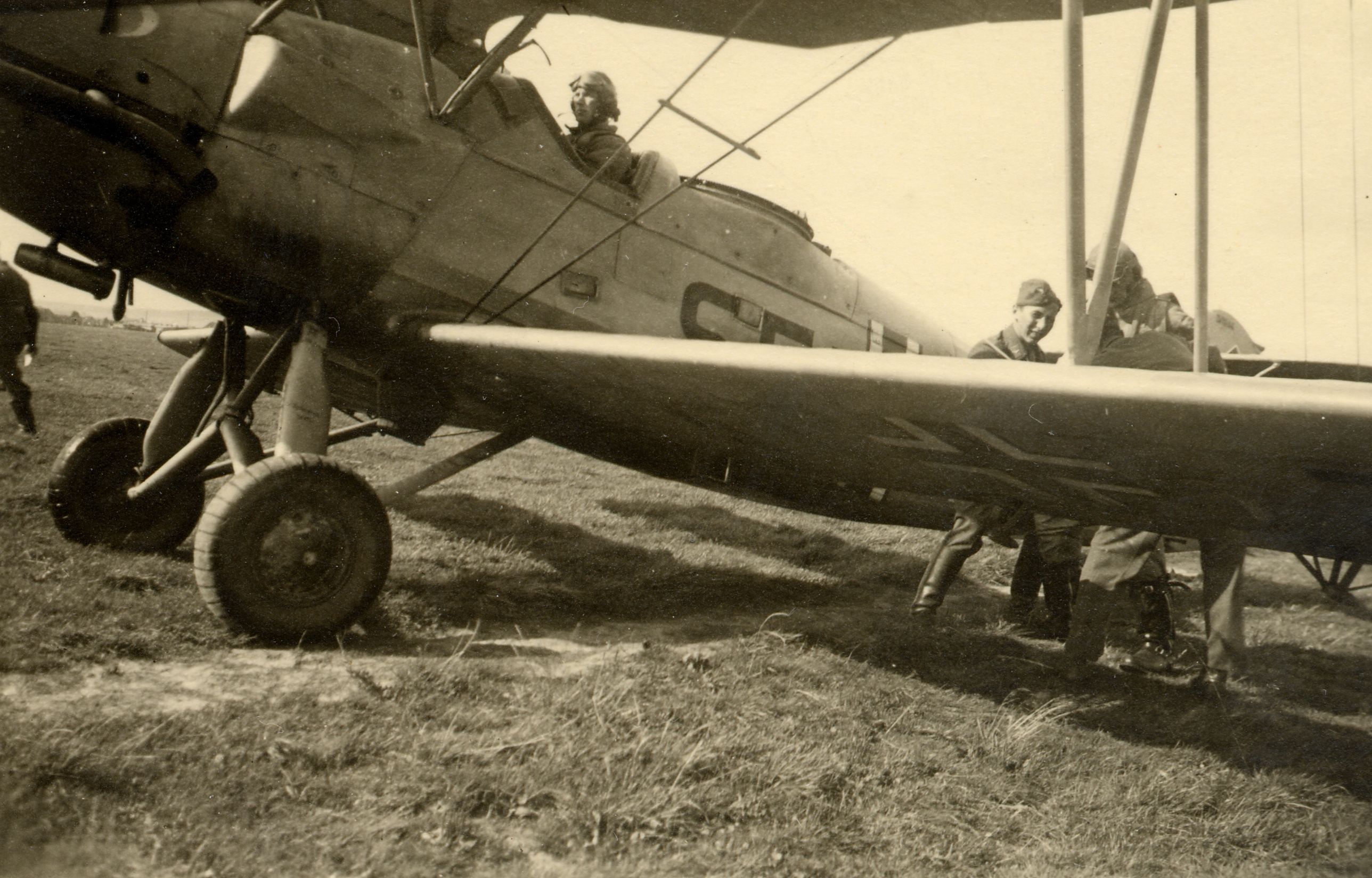
Germany fought by land, sea and air. Here, a photo shows readying of a plane in the German Luftwaffe. Despite restrictions on Germany’s air power after World War I, Hitler began reorganizing German air forces in 1935.
The Holocaust
The imprisonment and systematic killing of Jews by Germans during World War II is well documented. Below, Jewish prisoners are shown lined up at concentration camp at Sachsenhausen, Germany. The Nazis killed at least 6 million European Jews and millions of non-Jews during the war.
Concentration Camp Crematoriums
The Nazis buried and burned those they killed in concentration camps. Large-scale crematoriums were set up to incinerate bodies, with ovens like the ones seen below. This image was captured after Allied forces found a concentration camp at Weimar, Germany.
The Soviets
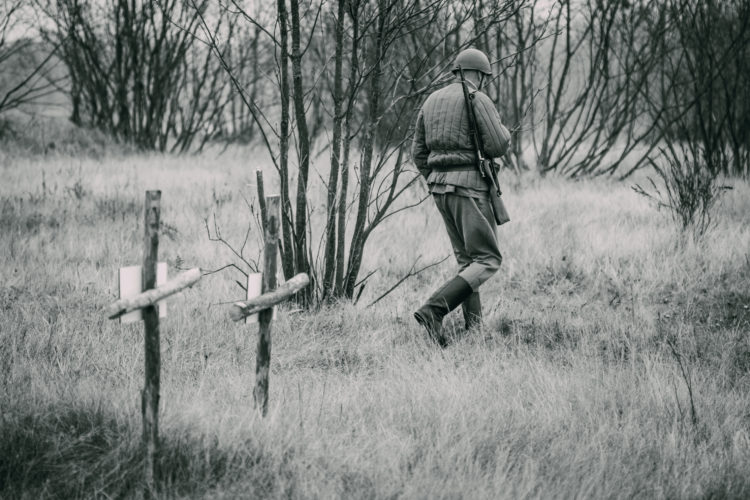
Here, a Soviet soldier walks past grave markers. The Soviet Union became an Allied country in June 1942 after its former Axis ally Germany invaded the country for control of its resources. Twenty-six to 27 million Soviets, including 8.7 million military members, died during the war.
Soldier of the Red Army walks past graves
Japanese American Internment
While a small number of German-American and Italian-American civilians in the U.S. were rounded up during WWII, a large number of Japanese-American civilians were sent to internment camps during the war for fear that they might contribute towards Japan’s war efforts.
Here, a scared-looking young girl clutches a small bag and a partially eaten apple as she waits to board a bus heading to eventual internment.
Civilians Caught in the Middle
All over the world during WWII, civilians were caught in the middle of fighting. Seen here is a mother and her children who hid in the hills during fighting in Saipan, in the Northern Mariana Islands. The Battle for Saipan took place over three weeks in June 1944. Civilian and military casualties reached 55,000.
Battling in the Jungle
U.S. forces fought the Japanese in the Solomon Islands for close to two years. Air and surface fighting lasted from November 1943 until August 1945. U.S forces won out in the end. Here, Marines with their trained messenger and scout dogs are shown in 1943.
Medical Treatment
Medical aid certainly had improved between WWI and WWII. The introduction of a blood plasma treatment as seen being given below in 1943 was relatively new. The photo also shows the overlap between military forces and civilians. In this case, Sicilian residents watch with concern as a wounded soldier is treated.
Soviets in the Air
The image of the Soviet Union and its forces during WWII probably brings to mind ground troops. But the country also had air forces, such as the Lagg-3 fighter planes seen below. The U.S. Lend-Lease program to aid Allies prior to America joining the war in 1941 provided the Soviets with planes as well.
Faith in the Field
In this intimate battlefield image, a priest holds Mass in Saipan in 1944. Chaplains supported the U.S. forces after they joined in the WWII fight. Close to 2,800 chaplains of various denominations served military members by the end of the war.
African Attacks
“Desert Fox” Erwin Rommel led the Nazi forces in Africa. Though he was commanding the troops, he was known for getting so close to the action that he was injured and gained a reputation for his battlefield prowess. The Nazis lost the war in North Africa in 1943 and Rommel went on to lead European battles.
Atlantic Action
In the Atlantic, Allied and Axis forces battled it out at sea. Here, a depth charge hit a Nazi U-boat (submarine) in April 1943. Submarine casualties were heavy on both sides during the war.
Battles at Sea
The war in the Pacific saw many battles from below, above and at the surface of the ocean. Here, kamikaze pilots targeted the USS Bunker Hill, which resulted in high casualties. The damage took place on May 11, 1945, near Okinawa, Japan.
Civilian Massacres in Manila
While the Rape of Nanking is well-known today, the Rape of Manila, the 1945 massacre of civilians by retreating Japanese forces in Manila, Philippines, at the end of World War II, is not as widely known. Fifty thousand people died as Allied forces approached. The image below is from a smaller-scale murder of civilians by Japanese forces in July 1945 in the Philippines called the Tapel Massacre.
Fighting for America
About 1 million African-Americans fought for the U.S. in the Second World War. But they had to fight in segregated units. Back at home, many of them eventually joined the civil rights movement.
Strategy
Long before modern-day mapping technologies, countries plotted out strategy and military movements on wall maps, as an Air Force officer does here.
Practicing for D-Day
The image below is not of D-Day, the famed Allied invasion of the beaches of Normandy, France, that turned the tide toward victory in Europe for the Allies. It’s a “dress rehearsal” on British beaches to prepare for the actual invasion. The D in D-Day stood for a placeholder for a designated battle day.
Nuclear Aftermath
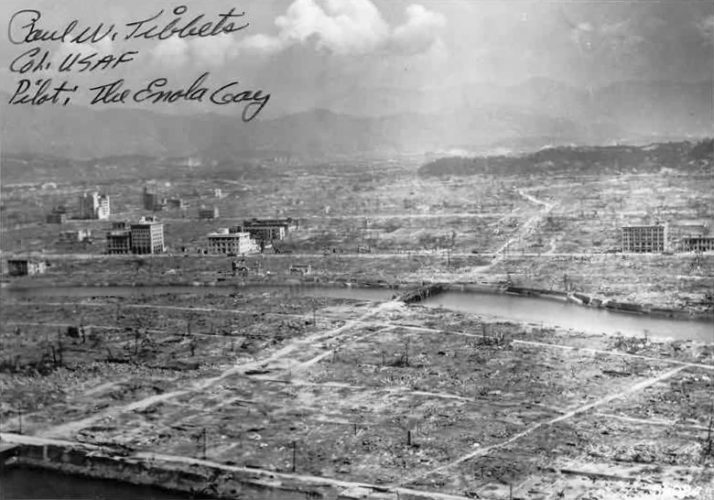
World War II ended with the surrender of Japanese forces after the dropping of atomic bombs on Hiroshima and Nagasaki. Below is a photo of the post-atomic bomb destruction. In Hiroshima, a conservative estimate puts 150,000 dead, though some estimates are closer to 200,000. In Nagasaki, more than 70,000 people were killed.
Liberation
After the liberation of concentration camps, survivors had to make new lives for themselves and many were unable to return home due to ongoing anti-semitism. These three young Jewish people are heading to Palestine. The still controversial and fraught decision to form a Jewish state, Israel, in Palestine was made in 1948.
Sponsored Content

